Bitcoin White Paper 17th Anniversary: Half Sea, Half Flame
- 核心观点:加密交易者普遍缺乏系统化交易哲学。
- 关键要素:
- 80%受访者承认交易纯靠市场情绪驱动。
- 多数交易者胜率仅50%,频繁经历爆仓。
- 仅少数交易者深入研读过比特币白皮书。
- 市场影响:凸显市场情绪化与非理性特征。
- 时效性标注:中期影响
Original article | Odaily Planet Daily ( @OdailyChina )
Author | Ethan ( @ethanzhang_web3 )
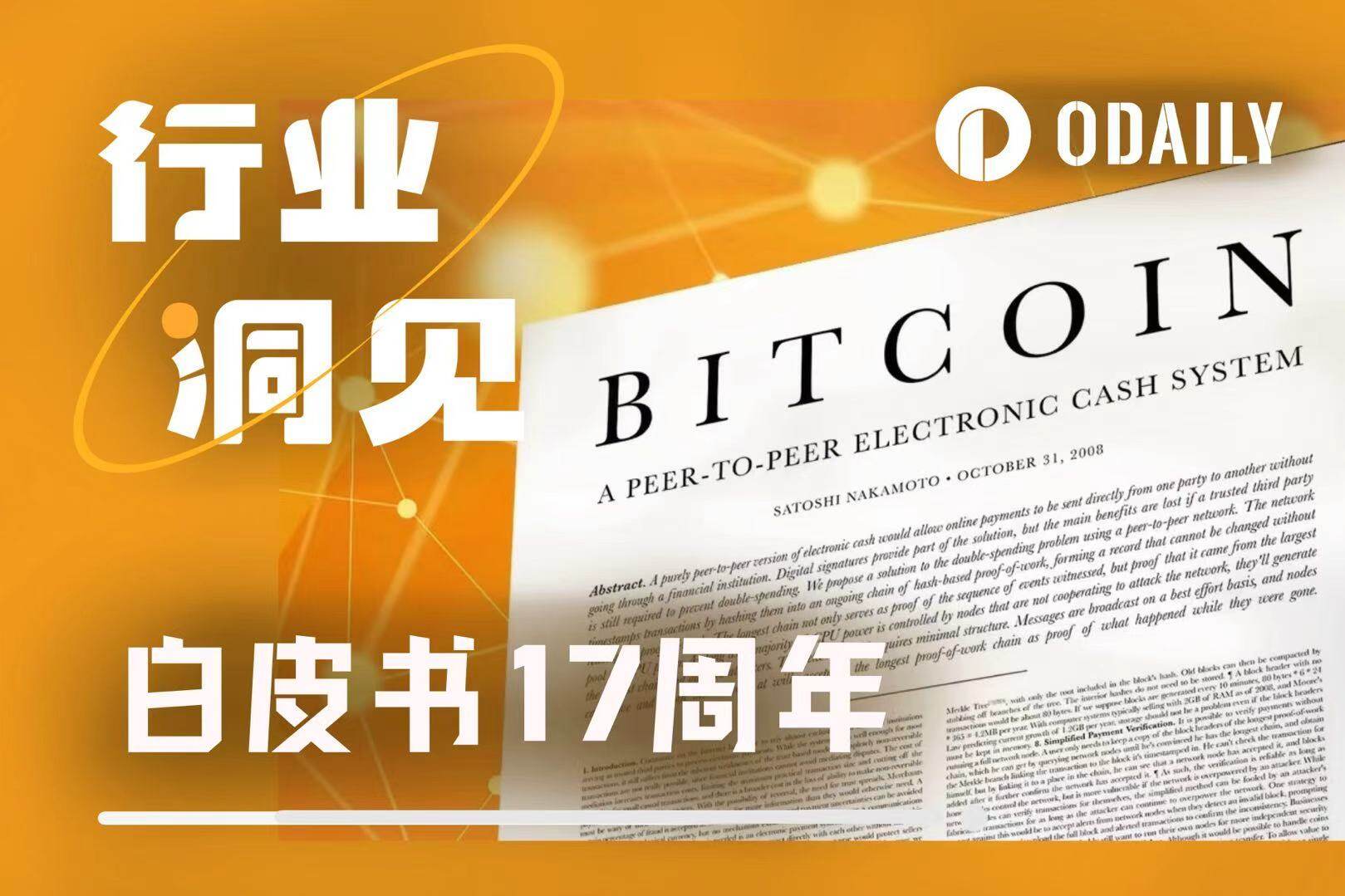
On October 22nd, top venture capital firm a16z released its "2025 Crypto Industry Annual Report," providing a vivid illustration of the current market maturity. The report paints a picture of a thriving ecosystem: the cryptocurrency market continues to expand, traditional financial institutions are systematically embracing this new asset class, and stablecoins have evolved into a significant force in the global macroeconomic system. Simultaneously, the improvement of blockchain infrastructure and its deep integration with cutting-edge technologies such as AI are ushering in a new golden age for the crypto industry.
Behind these grand trends lies the participation and choices of countless real individuals. Their shared "underlying consensus" can be traced back to the mere nine-page Bitcoin white paper written by Satoshi Nakamoto 17 years ago. The peer-to-peer electronic cash system, proof-of-work mechanism, and distributed ledger structure first proposed in that document form the initial cornerstone of trust in today's crypto ecosystem. The white paper was not merely a technical proposal, but also a social experiment—a vision of decentralization, transparency, and self-sovereignty. Today, this technological ideal has long since translated into market reality, becoming the starting point for the behavioral patterns of tens of thousands of traders.
On the 17th anniversary of the white paper's release, rather than simply revisiting that technological revolution, we hope to explore: how have these ideals shaped today's market behavior step by step? And who is continuing its momentum?
To this end, Odaily, in collaboration with Bitget, conducted a survey from October 24 to October 30, targeting traders across various asset classes, including mainstream cryptocurrencies, altcoins, and Meme coins, through a combination of community outreach and targeted invitations. The survey aimed to capture an answer to a question from a micro perspective: in the crypto world woven from grand narratives and market desires, how do real traders think, make decisions, and get used to volatility?
Trading without philosophy: Humanity and volatility revealed in a questionnaire
This is a group of truly vibrant, real traders. They cannot paint a complete picture of the crypto market, but they serve as windows into the individual worlds of individuals. Through the questionnaires collected in this survey, we see not cold, hard numbers, but vivid faces of traders, their self-narratives interwoven to create a tapestry of investment life in this era.
The overall tone of this group is very clear: they are mainly young people under 35 years old, with 1-3 years of contract trading experience, most of them have cross-asset investment backgrounds (such as stocks and gold), trade frequently, but their win rate generally hovers around "50/50".
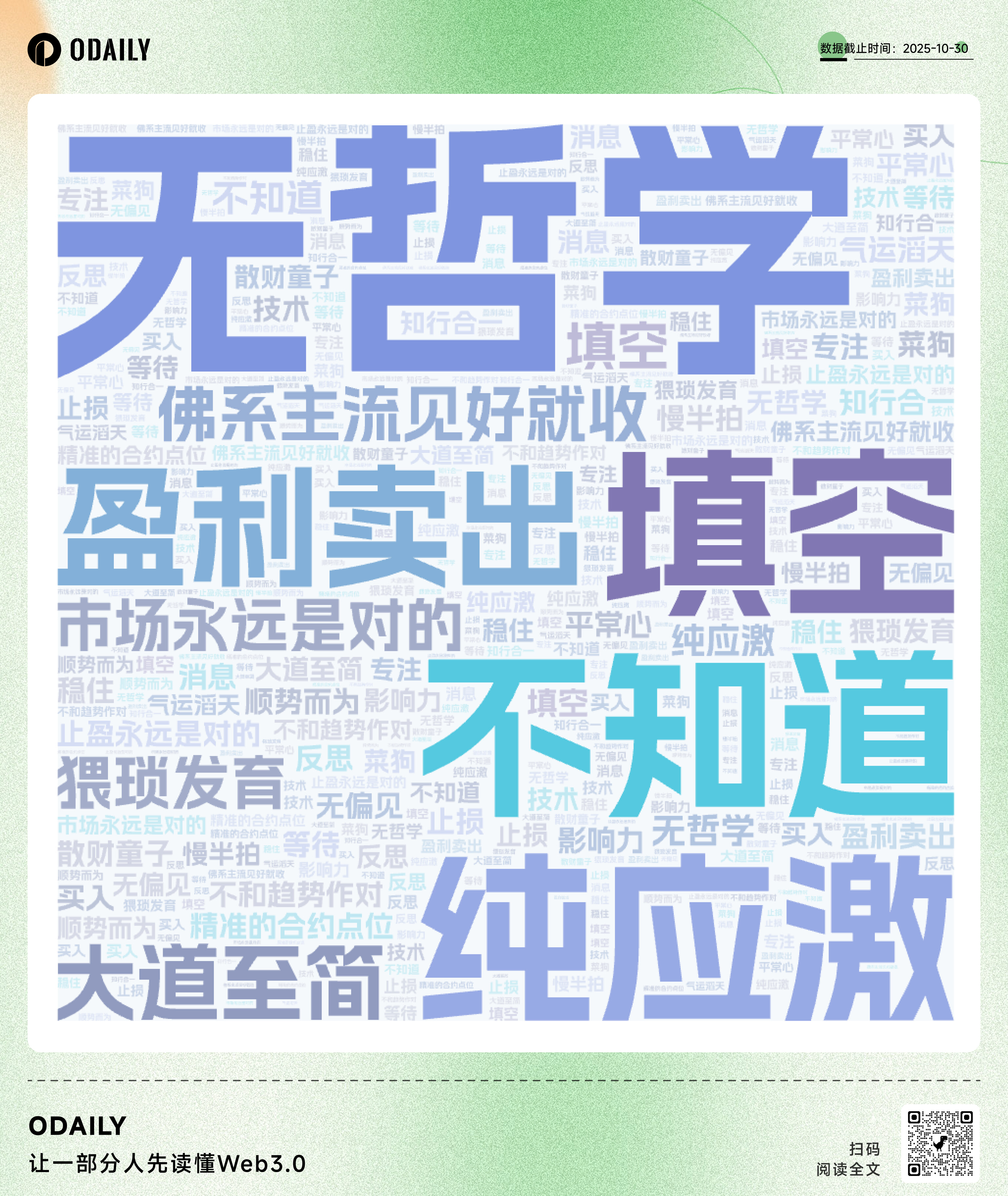
A list of keywords in trading philosophy
However, one prominent characteristic runs through the entire picture— a pervasive state of "no philosophy." When asked about their trading philosophy, a staggering 80% of respondents unanimously chose "no philosophy, purely reactive." This slightly self-deprecating summary accurately captures the true state of affairs for most: their decisions heavily rely on "market sentiment/news," and their actions resemble instinctive reactions to market fluctuations rather than systematic judgment.
Against this backdrop of commonalities, the differences between individuals become particularly vivid. Jack Wang (pseudonym) perfectly captures the core characteristics of a "reactive" trader. Despite coming from a logical and rigorous technical or internet industry and possessing one to three years of contract trading experience, Jack's trading behavior exhibits a stark contrast: he heavily relies on market sentiment and news for high-frequency trading (more than once a day), with extremely short decision-making chains. This model has led to his trading career being like a high-speed rollercoaster—his most brilliant moment was when he "went all in on Bitcoin and earned 10,000 USDT," while his most painful experience was the complete liquidation of his leveraged positions during the "October 11th crash." He summarizes his win rate as "half sea, half fire," while his overall investment return is a helpless "complete loss."
Faced with the extreme volatility of October 11, his first reaction was "wait and see/bewildered," which precisely reveals the real dilemma of most emotion-driven traders: even if they have allocated gold and stocks in addition to cryptocurrencies and have a certain degree of diversification awareness, in the face of high volatility in contracts, the risk control framework of the system often succumbs to instinctive reactions.
Outside of trading, he strives to maintain a "normal lifestyle," using foot baths and massages as ways to manage stress. This oscillation between high tension and attempts to relax makes him a clear and authentic footnote in the crypto world— an ordinary person constantly seeking balance between a rational professional background and a non-linear market.
In contrast, Melody Li's profile reveals a more complex psychological layer. Like Jack, she comes from a technical or internet background and applies analytical skills to her trading decisions: focusing on altcoins, basing her decisions on fundamental analysis , and maintaining a trading frequency of several trades per week. This rational framework brought her a moment of glory—she began building her position in ORDI when it was only $5 to $8 and witnessed it rise to $96.
However, the starting point of success also became the source of regret. She ultimately lamented that she " didn't sell when the market moved ," failing to lock in profits in time. The rollercoaster-like regret became a more torturous experience than simply losing money. Even during the sharp drop on October 11th, her reaction was contradictory: on the one hand, she was "observing/being stunned," while on the other hand, she had the idea of "adding to her position to buy the dip," demonstrating the tug-of-war between hesitation and greed that is common among traders.
More noteworthy is the profound impact trading has had on her life. Melody focuses solely on cryptocurrency, with no other investment preferences. This complete dedication has gradually altered her life trajectory: her sleep schedule is reversed, and she has "no hobbies" outside of trading . This candid confession reveals the invisible pressure that new traders experience when adapting to the high-intensity market rhythm—not only the fluctuations in funds, but also the encroachment on their lifestyle and personal space.
Melody's character transcends a simple profit and loss narrative, revealing the real dilemmas faced by many traders who have transitioned from the tech world to the crypto world: even with a rational analytical framework, it is difficult to completely avoid emotional disturbances, and in the pursuit of Alpha, they constantly face the blurring of the boundaries between life and trading.
Of course, among the diverse group of participants, there are also those who shine even brighter. Take Ricardo Ge, for example, a poker enthusiast and a veteran with over three years of experience specializing in Meme coins. These types of Alpha information seekers typically prefer Bitget's primary market information access pathways, initial project tracking tools, and GetAgent-assisted decision-making. Leveraging his keen sense of market sentiment, he achieved a 10x return on AIOS, earning 200,000 USDT. This successful player's story paints a picture of a seasoned individual who profits through experience and courage in high-risk environments.
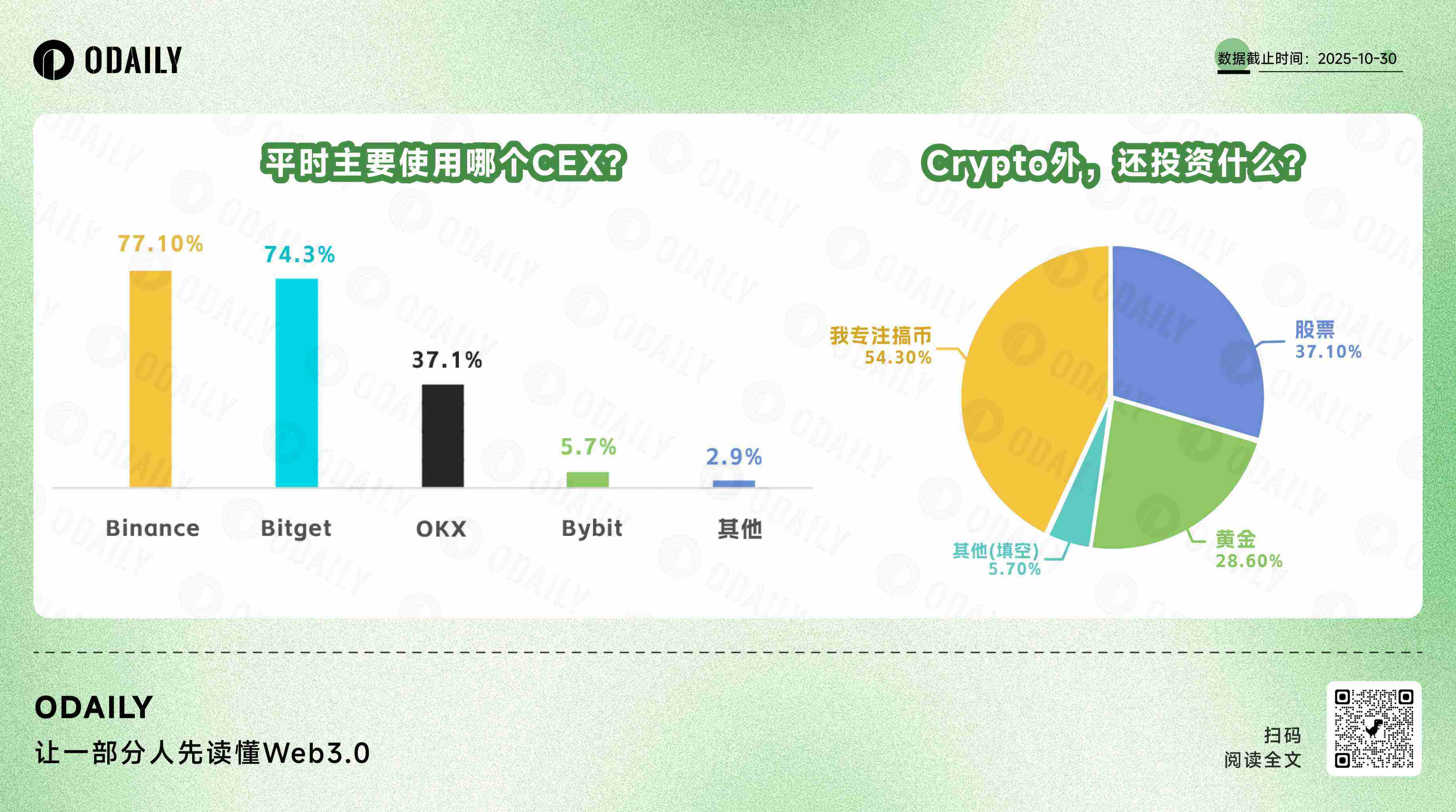
CEX selection and external investment targets (Multiple choice for the first question)
Mark (pseudonym), a participant, represents a different approach. He is a seasoned veteran in the industry, having traded for over three years, primarily focusing on mainstream cryptocurrencies. His experience is quite representative: from making small profits in the spot market during the "mining" era to consistently losing money with futures contracts, and personally experiencing multiple black swan events such as the "9.4" crash. He condenses his trading philosophy into " simplicity is the ultimate sophistication, and knowledge and action are one ," portraying himself as an explorer who persists in introspection amidst market fluctuations, attempting to elevate complex experiences into simple principles.
Looking at these faces, from bewildered "pure stressors" to reflective individuals bearing pressure, to profit-takers achieving temporary successes and those seeking balance, the inherent tension within the crypto trading ecosystem is clearly visible. This world both amplifies human weaknesses and tests the limits of rationality. The profound paradox it reveals lies in the fact that a group of participants with cognitive abilities and focus often make highly emotional decisions in a market that heavily relies on discipline.
This disconnect between rational cognition and reactive behavior may be the most real and alarming aspect of the crypto trading field.
Market Stories: The Strategies, Philosophies, and Lives of Five Traders
No one can teach you how to survive in the crypto world; every trader has to figure out the script on their own. In this chaotic theater, we've brought together five low-profile yet diverse players to attempt to depict a "market panorama"—their strategies, philosophies, and lives together form a user manual beyond the white paper.
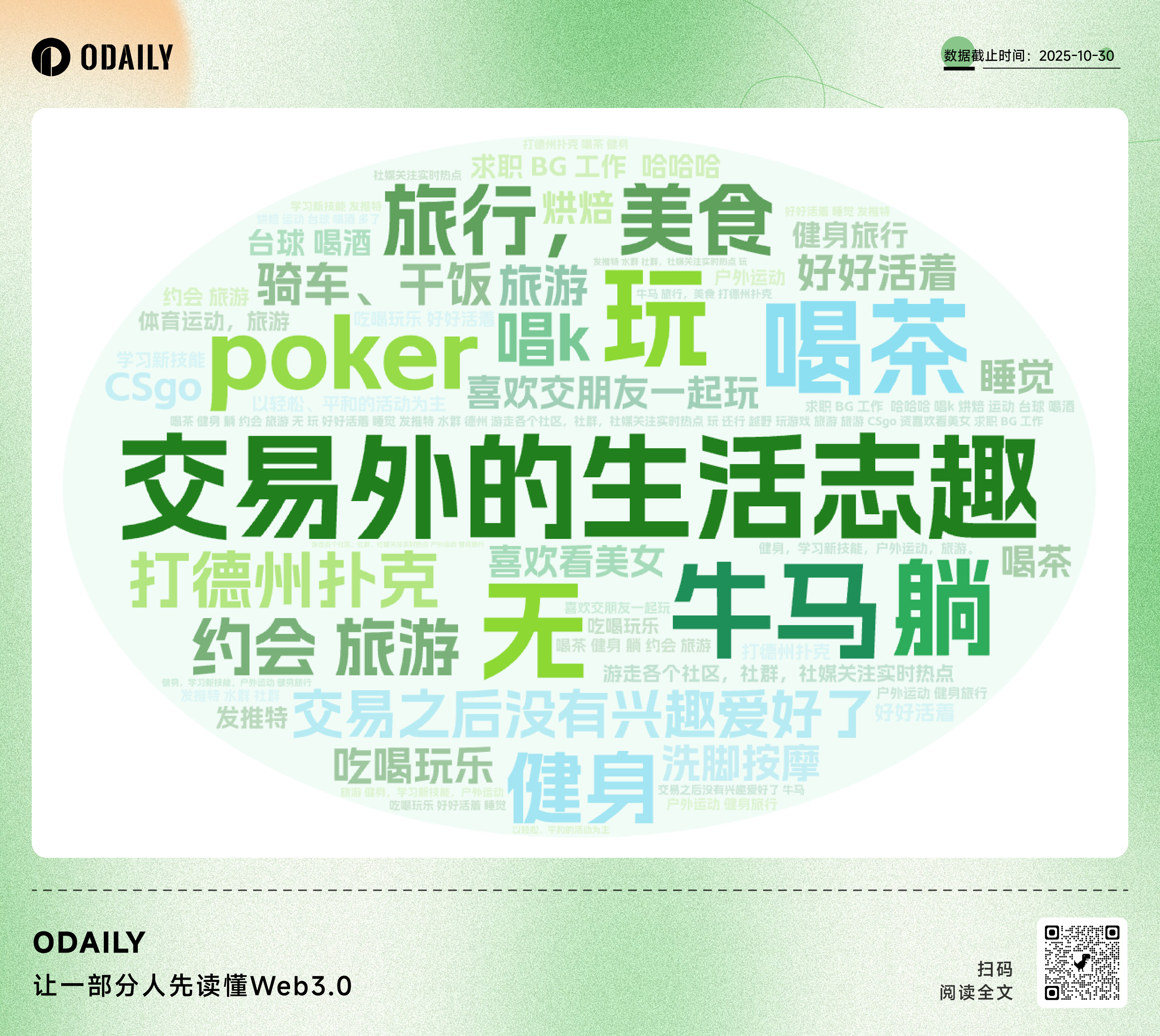
A glimpse into the traders' interests and hobbies outside of trading, as observed in the survey.
Respondent Profile #1: People can't just stare at the charts; they also need to look at the sky occasionally.
Full-time investment research and trading analyst "Crypto Araki" ( @HM010169 ), specializing in altcoins, with over three years of contract trading experience. His world consists of two dimensions—systems and epiphanies. Within the system, he is an extremely calm architect; in epiphanies, he is like an observer awakened by life.
When evaluating early-stage projects , he breaks down the criteria into a " four-dimensional scale ": team (35%), industry sector (25%), economic model (25%), and community (15%). The team is the top priority; he only trusts companies with strong resumes, excellent execution capabilities, and founders like YZi Labs or a16z. For the industry sector, he prefers high-potential sectors, especially emerging sectors with strong demand logic such as AI Infra, RWA, and DePIN. The economic model is like a math problem—team ≤ 20%, private equity ≤ 25%, ecosystem ≥ 40%, tied to practical use, and ideally with linear release and buyback mechanisms. Even with the lowest weight given to the community, the requirements are clear: organic growth, multilingual penetration, and high interaction frequency are essential.
When acquiring information , a near-stringent " Alpha Hunting Three-Step Method " is employed: First, only the source is trusted, and intermediaries are disregarded; the source is limited to project teams, VC wallets, and Builder activities. Second, on-chain data, official statements, and community buzz are used for cross-verification; two must be confirmed before any action is taken. Third, the message is released into multilingual communities to test its natural spread; the bottom line is—"true information grows on its own, false information is spread by shouting."
Regarding his VC project trading strategy , he prefers a meticulously calculated approach . For TGE, he first locks in 30-40% profit as a profit-taking buffer on the first day. Then, he assesses his holdings based on the unlocking schedule, market depth, and narrative momentum, typically deciding to add to his position or exit on the 7th day. For example, $VULT: low FDV, high circulation, Kraken initial offering, strong hype, and perfectly timed narratives—this type of coin can be bet 60-70% for a medium-term investment, but only if the VC doesn't dump the tokens, the tweets continue, and the ecosystem becomes active; otherwise, he liquidates his entire position.
This process is precise and calm, almost like a machine. But the real him, outside the system, also has a past where he was once held hostage by market fluctuations. He once joked that he "can't do anything but watch the market," until one morning, as sunlight fell on his coffee cup and the aroma rose, he suddenly realized: the market can drain you dry, but life can also slowly heal. From then on, he set several life rules for himself: make coffee in the morning, not to stay awake, but just to avoid touching the market for a few minutes; run in the afternoon, two kilometers to reboot his brain; watch the market when it comes, but no longer emotionally, "If I get liquidated, I turn off the computer, light a cigarette, and if I don't make money, I just let it go."
He said, "The crypto world taught me about volatility, and life taught me to let go." His ultimate realization was not in charts or models, but in that moment when he looked up after countless hours of staring at the market—"One cannot only stare at the market; one must also look at the sky occasionally."
Respondent Profile #2: A Mainstream Cryptocurrency Hunter with Discipline as His Weapon
With extensive live trading experience, Mandy ( @mandywangETH ) is a contract trader who believes only in rules and doesn't rely on luck. She primarily focuses on mainstream cryptocurrencies, employing a calm yet decisive style. Her core logic can be summarized in one sentence: market conditions are unpredictable, so precise reactions are essential.
Her operating system virtually eliminates all "feelings"—focusing solely on price action, using data as supporting evidence, and isolating emotions from the system. What is an exit signal? It's not a vague "it seems like a reversal," but rather a complete breakdown of a major support level followed by a weak and unconfirmed rebound. Once confirmed , exit immediately, without hesitation. She says, "The market is always right. My task is not to question, but to obey."
In a bull market, she identifies key levels and holds on tight, profiting from the entire trend. In a bear market, she hides in the shadows, patiently awaiting the predatory signal. "Cycle-driven strategy, discipline ensures execution." She doesn't chase rumors, doesn't believe KOLs, and doesn't tell stories; she relies solely on structure to build trading order.
She has no illusions about the future trend of the market—she doesn't believe in predictions at all, and the only thing she can control is her own rules and reaction speed.
His lifestyle is extremely simple: outside of trading, he enjoys "eating, drinking, and having fun," but he maintains clear boundaries and never indulges. He was once a crypto enthusiast, working day and night, placing orders based on emotions, and experiencing repeated margin calls. Now, he survives by relying on a well-defined system, no longer fantasizing about getting rich quick, and no longer dancing to the tune of the market.
She won't tell you the best entry point, but she definitely knows when to exit. Because she's not one to speculate about the future, but a hunter who obeys reality. In her world, emotion is a trap, certainty is the weapon.
Respondent Profile #3: The Cautious and Astute "Hidden Growth Player"
The "artist" ( @CryptoPainter_X ), who frequently checks Bitget for market updates while traveling, is a typical "tailor-made" practitioner. He doesn't blindly follow a single logic, but rather flexibly adjusts his strategies based on the characteristics of different cryptocurrencies. He tends to hold mainstream coins with profitability and strong fundamentals for the long term; for sentiment-driven targets, he focuses on short-term speculation.
Behind this flexible combination lies a profound understanding of market structure and risk management. The stablecoin supply ratio and the futures-spot price spread are his two most frequently referenced indicators—the former measures the willingness of off-exchange funds to enter the market, while the latter reflects the strength of sentiment and directional momentum. In his view, data is not decorative "evidence," but rather the underlying constraint of the trading system, used to calibrate emotions and intuition. His overall style is calm and pragmatic: supported by indicators and with a feedback loop.
He calls his trading philosophy "stealthy development," which is not self-deprecation but a proactive choice made after mature understanding. High-win-rate strategies never rely on gambling on explosive moments, but rather on controlling uncertainty. He avoids chasing highs and gambling on lows, and when the trend is unclear, he reduces his position, observes, and waits, using space to buy time, leaving room for the next attack.
When judging a trend reversal, avoid making decisions based on gut feeling; instead, rely on structural signals—whether there are alternating declines in highs and lows. This logic was proven during the "October 11th crash": add to positions in strong currencies and cut losses in weak currencies, employing a two-pronged approach. That wasn't about boldness, but rather the execution of a structurally sound strategy.
His background in the technology and internet industry has instilled in him a programmer-like rationality in trading. Now, he's more like a data-driven market veteran—he doesn't shout "All in," doesn't trust KOLs, and instead relies on his self-built system and strict discipline. That system once allowed him to achieve a 52-fold return on his principal , a true embodiment of the saying, "The real enemy is not volatility, but arrogance and impulsiveness."
In a market that frequently touts "windows of opportunity," calm individuals like him , who don't rely on winning once but rather on avoiding devastating losses each time , constitute the most overlooked yet most stable force in the crypto market.
Respondent Profile #4: Using Quantification to Play a Free Game
UNICORN ( @UnicornBitcoin ), with a background in traditional finance and experience in stocks, gold, and crypto assets, boasts over three years of contract trading experience and has achieved cumulative returns of over 100 times the principal . He is the kind of quantitative trader who doesn't make a fuss but whose data is exceptionally hardcore.
The trading system is built like a continuously operating "factor machine": with cyclical regression at its core, it continuously iterates effective factors while eliminating noise and ineffective variables. It's not about using the same model forever, but rather a never-ending "probability experiment"—which factors are still alive and which must be eliminated depends entirely on backtesting.
When faced with a market crash, we don't rely on mystical methods or sheer boldness. Our operational structure is clear: large funds use zero leverage, prioritizing survival; smaller funds use high leverage, but with precise stop-loss and take-profit orders. On October 11th, during the sharp drop, the moment the model gave the signal, we immediately added to our positions to buy at the bottom—without hesitation or ambiguity.
UNICORN is one of the very few traders who has thoroughly read the Bitcoin white paper and has an unusually firm belief in the concept of a "free supranational currency." He doesn't treat this understanding as a slogan, but rather incorporates it into the core of his strategies, viewing cryptography as a parallel narrative to traditional rules.
This system is calm, clean, and replicable, which led him to summarize his trading philosophy in two words: "Play life, play trading ." He enjoys playing competitive games and raising pets, giving himself breathing room outside the risk curve.
When asked if he believed "this market trend is different," he only replied, "In the face of cycles, there is no difference between this and other times."
There are no emotional highs, no philosophical footnotes, only a continuously self-calibrating system that writes footnotes in every round of fluctuations.
Respondent Type 5: Finding money through connections and winning through luck.
Xiaoyufu ( @Cryptostartup11 ) is a typical "luck-based" trader. He doesn't adhere to technical models, nor does he blindly believe in data-driven trading. Instead, he integrates information sources, relationship networks, and market intuition to build a highly personalized trading system.
In early-stage project evaluations, his judgment framework is straightforward yet essential: team background carries the highest weight, followed by economic models and the narrative of the industry . He doesn't elaborate, but the underlying logic is clear—what truly determines the success of a project is always its people. He values people, networks, and information sources. Alpha isn't derived from charts, but rather filtered from "friends' trading styles" and "worthy private channels." For example, a Testnet address mentioned by a VC friend at a dinner party became a springboard for a new hot coin a few days later—a signal he calls "information connection."
This method may not be standardized, but it is extremely realistic. He doesn't pursue certainty, but rather uses intuition and experience to capture the ambiguous signals in the crypto market. As he says, "The crypto world is a world that unfolds in the two dimensions of data and the three dimensions of dreams." He acknowledges that hard work and research are fundamental, but what truly propels people to the top is "unparalleled luck."
His trading philosophy can be summed up in these four words: overwhelming luck . This is not blind faith in fate, but a coping mechanism for extremely uncertain markets—in the cracks between black swan events, crazy bull markets, and community speculation, the line between rationality and metaphysics is sometimes blurred.
Outside of trading, he enjoys fitness, travel, and learning new skills—seemingly unrelated to the cryptocurrency market. However, he understands this very well: emotional management and mental well-being are fundamental to "receiving signals." And these "signals" might be hidden in a dinner party, a group chat, or an Alpha tweet that receives no likes.
Not everyone can replicate his path. But in a market where information is highly skewed and emotions drive prices, he relies on trust and cherishing relationships, incorporating connections and luck into his system. This system isn't written in a white paper, but it truly exists in the "gray area" of the crypto world.
summary:
From the disciplined "structure school" to the fate-oriented "luck school," the five traders displayed five distinct survival strategies. However, in stark contrast to their diverse strategies was a general alienation from the original Bitcoin text: of the five, only one had thoroughly studied the white paper, three had only scratched the surface, and one had never even opened it.
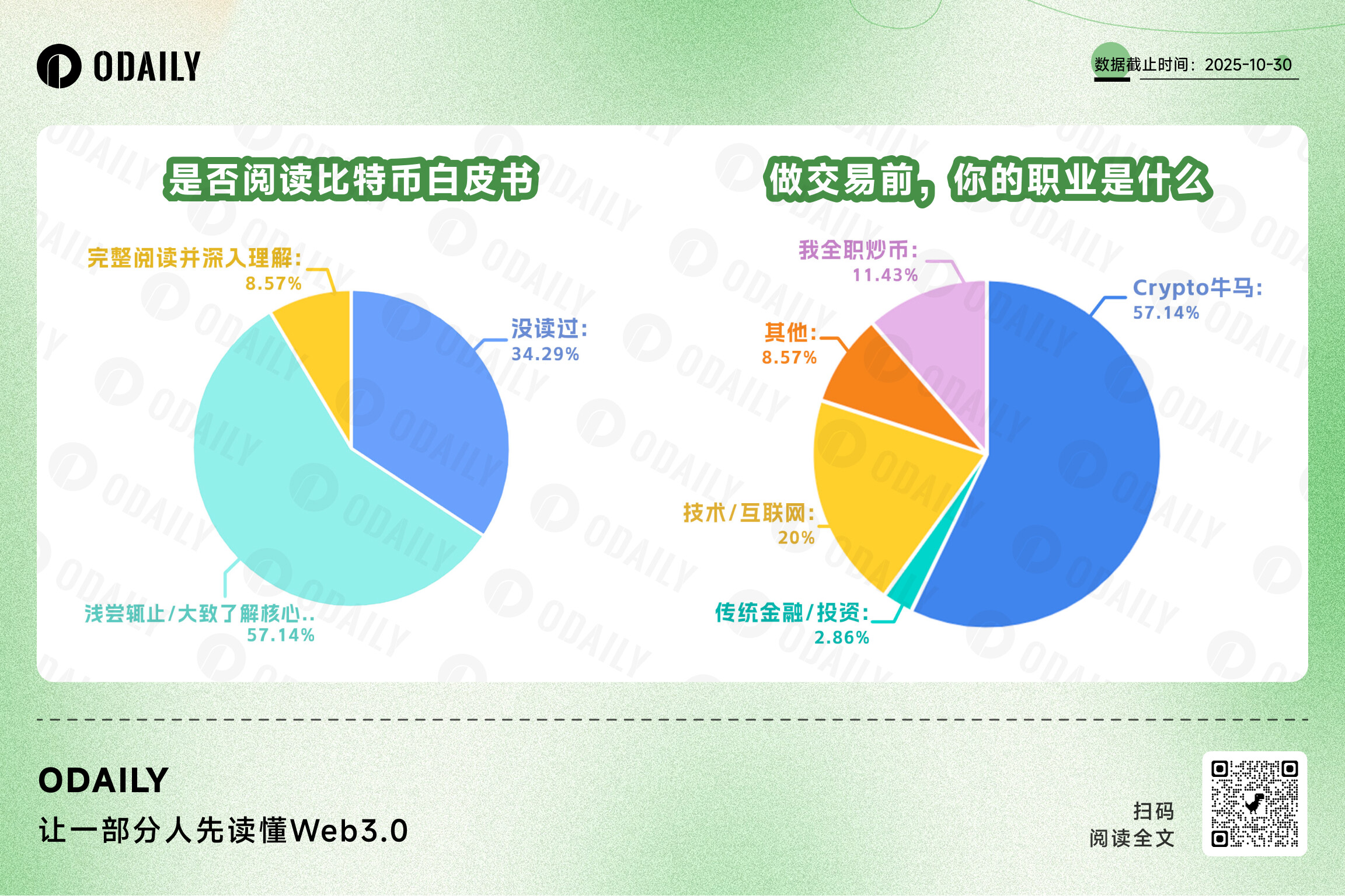
Bitcoin White Paper Reading and Pre-Trading Career Situation Pie Chart
Of all the traders surveyed, over half had only a superficial understanding of the Bitcoin white paper. This precisely demonstrates that what drives this market is far more than a consensus on the original theory. Without exception, they are all adding vivid footnotes to that nine-page white paper with real money, emotions, and trial and error. If Satoshi Nakamoto's blueprint is an idealistic script, then each of their opening and closing positions is a real-life performance full of entanglements and improvisations.
They may not all be able to interpret the white paper, but everyone is writing its real-world version in their own way.
Seventeen years have passed, and countless people have continued to write the story of Bitcoin, following in the footsteps of Satoshi Nakamoto.
In the fall of 2008, Satoshi Nakamoto published a PDF white paper on the Cypherpunk mailing list. It described a "peer-to-peer electronic cash system" in calm and concise language, but did not predict how this protocol would reshape the wealth logic, daily rhythm, and worldview of a group of people.
Seventeen years later, Bitcoin is no longer just a technological protocol or an investment target. It has gradually become an anchor, a foundation of consensus: some use it to build models, some learn to cut their losses; some achieve leaps through it, some seek order in the process of going to zero. Some see it as a symbol of free will, while others simply see it as a "job" that they have to face.
This "Trader Habits Survey," conducted over a short period of one week, brought together a group of the most authentic participants in the crypto market. They are scattered across different countries and platforms, with assets spanning mainstream cryptocurrencies and Meme coins, strategies ranging from high-frequency to long-term, and trading experience ranging from six months to ten years. Some are reviewing their trades from high-rise buildings in Dubai, some are watching the market in teahouses in Chongqing, and others are long-term lurkers hidden deep within Discord channels.
We cannot reconstruct their entirety from a single form, but we hope that these fragments will leave an unfiltered, authentic footnote to the market. Perhaps many of them have never read the Bitcoin white paper, are unfamiliar with "zero-knowledge proofs" or "elliptic curve cryptography," or even cannot recount the working mechanism of a "peer-to-peer system." But without a doubt— they are the most authentic and indispensable active users in this system.
Every opening of a position, every profit-taking, every margin call, and every post-trade review, every emotional fluctuation and strategy choice, is a rewriting of this system. They are jointly writing a "user manual" beyond the white paper—it is not publicly released on GitHub, nor does it have a unified format; it exists only in the practice of each individual.
This manual, sometimes chaotic, sometimes radical, full of human warmth and noise, has never stopped being written. This may be the deeper meaning of Bitcoin after 17 years: it is no longer just a protocol about "what it is", but a marathon about "how we live with it".



